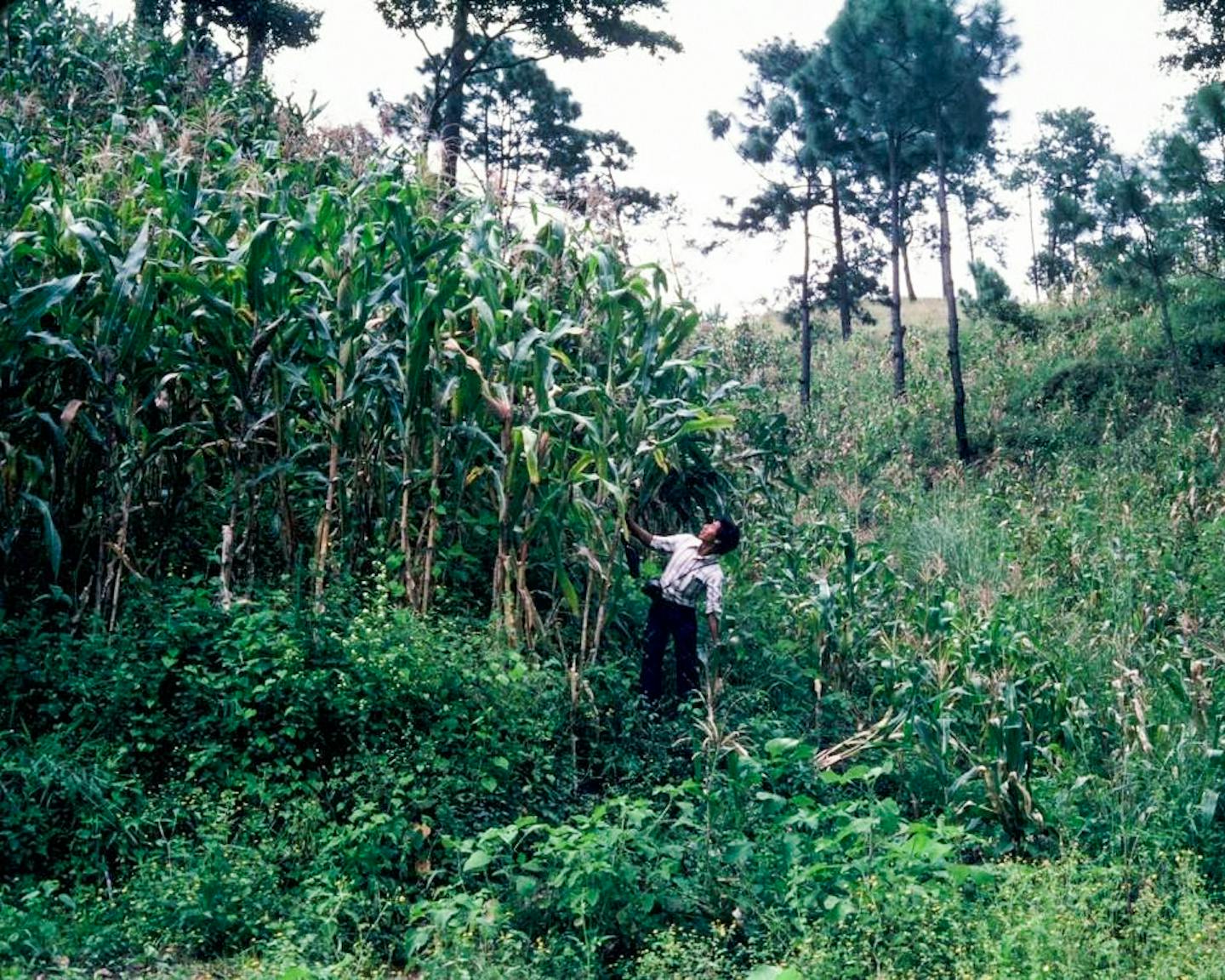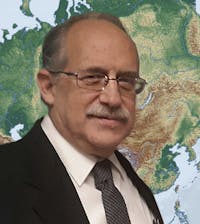Case study 4: Integrated development program
- Regenerative Agriculture
- Regenerative Croplands
- Agroecology
- Smallholder Farming
- Central America Subrealm
- Central America Realm
When the World Neighbors/Oxfam Integrated Development Program began in San Martín Jilotepeque in 1972, the average smallholder maize harvest in the township of 33,000 mostly Mayan people was less than 0.5 t/ha. At the same time, the township's smallholder farmers only sold at most some fifteen species of crops in the town’s market, including maize, common beans, coffee, cane sugar, oranges, a couple of other fruits and some native herbs.
The Program’s main agricultural goals were to increase maize and bean yields, conserve the rapidly eroding soil, and introduce the idea of a crop rotation instead of growing maize every single year on the same land. When the Program ended ten years later, it had spent a grand total of only US $300,000, with half of that dedicated to health, road work and earthquake rehabilitation. Yet fully 3,000 farmers had adopted contour grass barriers and improved fertilization, raising their average yields to over 1.5 t/ha. That’s a total cost of just $50.00 (in 1975 dollars) for the agricultural work for each family that sustainably tripled its maize yield. The Program also introduced a kind of field pea as a gm/cc to the area, but since no one knew much about tropical gm/ccs back then, it was a poor choice and failed completely. A crop rotation using maize, beans and wheat had been adopted by over 600 farmers.
At the same time, the Program taught the farmers the principles of RA, and taught farmers both to experiment on their own and share what they learned with each other. Thus, they learned to manage both the processes of agricultural research and extension. They had become the managers of their own development process—the “authors of their own destiny,” as Paulo Freire, the great Brazilian prophet of concientización, used to say. Today we would say they had become empowered.
In 1973, producing maize like this was relatively easy: just apply plenty of the right synthetic fertilizer. But by 1976, fertilizer prices had almost tripled. Nevertheless, people in San Martin had already become accustomed to producing good yields. Many tried buying fertilizer, buying animals to use their manure (both were too expensive), or trading the Napiergrass on their contour barriers for manure from large landowners (this provided too little manure). Others started growing high-value fruits or vegetables, which would pay, but only barely, for the labor of composting or the cost of fertilizers. We didn’t find a way of achieving good yields of basic grain crops cheaply, without excessive labor and without depleting the organic matter in the soil, until 1983, when we began learning more about gm/ccs.
I founded and ran the Program for a year and a half, and have returned occasionally since then. When I returned in 2008, I checked out the Sunday market. Those 3,000 farmers are now producing an average of about 3 t/ha of maize—six times their previous yields. Instead of 15 species of locally produced foods, I counted 96, including a half-dozen grains, along with over 35 different vegetables, over 30 fruits, and about 15 herbs. According to one independent evaluation, about three thousand farmers are now using soil conservation, zero tillage, the application of compost or animal manure to their soil, and crop rotations. Some have learned to use gm/ccs. Fertilizer use has dropped dramatically. Three “model farms” have sprung up, at which former program participant/leaders have trained farmers from around Central America in regenerative techniques (the numbers of visitors have recently decreased because so many people have already been trained). One of these demonstration farms won an award about ten years ago from the national government for having the best model farm in the nation.
In the early ’70’s, the vast majority of the Mayan people walked on foot to the Sunday market, some from as far as 20 km, with the women carrying their market goods on their heads. Mayan people rarely ever finished 6th grade. Thousands were trucked to the South Coast to work several months each year on plantations for less than $ 1.00/day. Today, going to the coast is a thing of the past, many young Mayans from San Martín have graduated from high school, along with a few from universities, and people either ride to the market on buses or in one of their Mayan neighbors’ used pick-ups. Whereas about half the young Mayan children had visible signs of malnutrition in the early ’70’s, hunger is now a tenth of that.
Still more important, San Martín’s farmer leaders are training farmers in Mexico, El Salvador and Honduras, as well as all across Guatemala. Some 35 leaders from the Program, none of whom had achieved a 6th grade education, have now worked as well-paid extensionists at different times with some 40 different non-governmental organizations. Five of them have become program directors for other institutions and three have worked in a total of over 15 nations of Asia and Latin America as consultants, being paid US $100 to $150/day. Furthermore, soil conservation, zero or minimum tillage and gm/ccs are being taught by development organizations throughout much of Central America.
The example of San Martín illustrates very well three important aspects of RA. First of all, at least for the world’s Laureanos, it’s more a journey than a destination. Any farm can always become more biodiverse. Most any farm can produce a lot more biomass, thereby producing more organic matter and sequestering more carbon. And many farms that have already made a tremendous amount of progress toward RA’s goals still use a little fertilizer on one crop or another. The important point is to advance as far along the continuum as possible, and always keep on trying to advance further.
The Dogon represent a very good case in point. After all, they have a diversity of trees all across their fields. Between all the trees and the multiple crops they grow, they easily have 15 different species growing in their fields in any given year. They never plow the soil, their soil is covered much of the year, and their plants feed heavily from the mulch. They are about as close to imitating a tropical forest as anyone has ever gotten while still producing basic grain crops. Yet even the Dogon are not ready to quit advancing.
The second aspect is that most of the world’s RA farmers will go on experimenting and innovating for decades, as they have in San Martín. They do so because, as they become aware of all the benefits these techniques can bring, and they want to enjoy more and more of them.
The third is that there is never going to be any one single regenerative farming system. In San Martin, there are now almost as many different regenerative farming systems as there are RA practitioners. We can teach people the basics of RA, but we won’t ever know how they will eventually use them to maximize their own individual benefits.
Read More >


